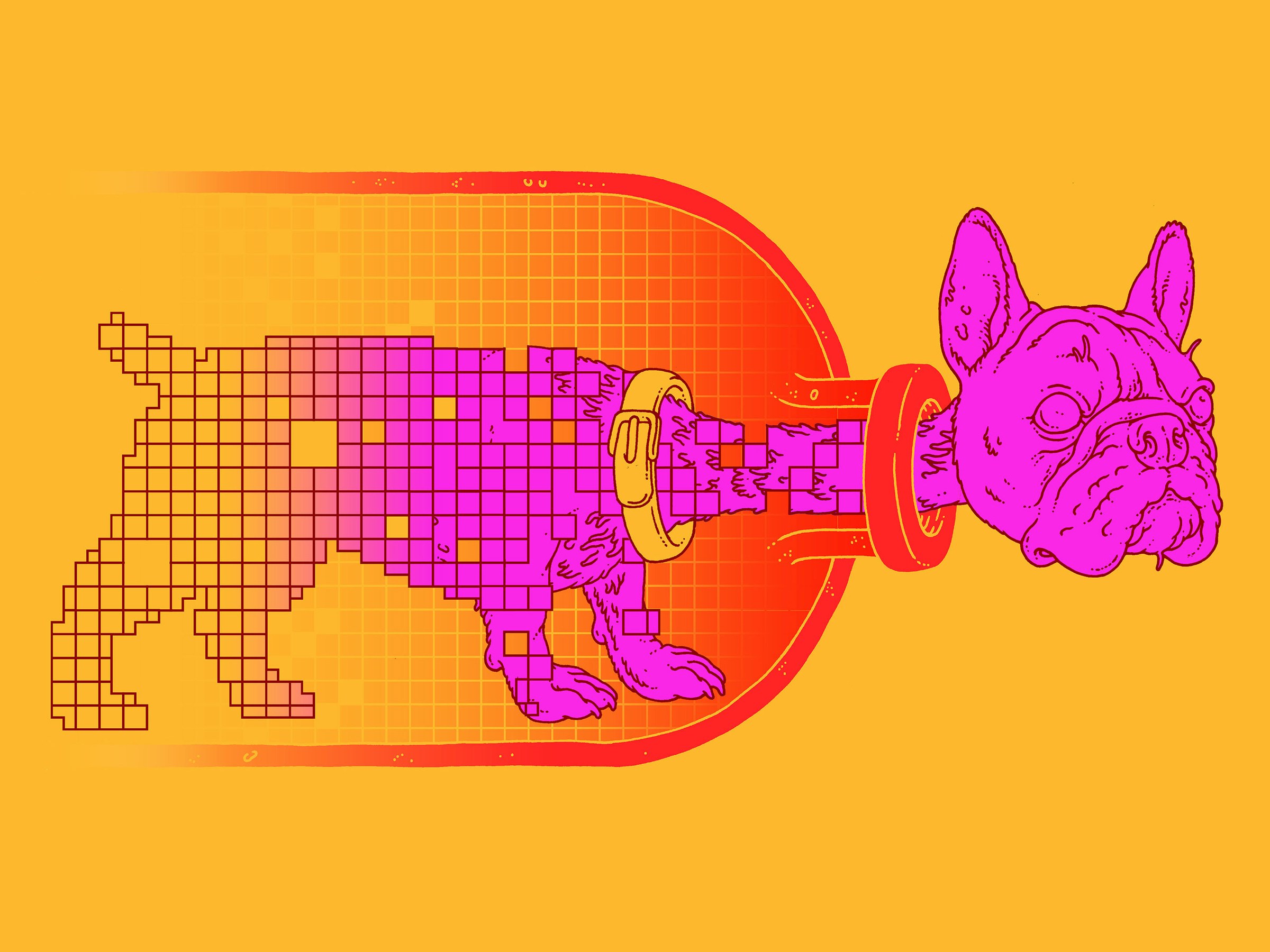Even as machines known as “deep neural networks” have learned to converse, drive cars, beat video games and Go champions , dream, paint pictures and help make scientific discoveries, they have also confounded their human creators, who never expected so-called “deep-learning” algorithms to work so well. No underlying principle has guided the design of these learning systems, other than vague inspiration drawn from the architecture of the brain (and no one really understands how that operates either).
copyright by www.wired.com
 Like a brain, a deep neural network has layers of neurons—artificial ones that are figments of computer memory. When a neuron fires, it sends signals to connected neurons in the layer above. During deep learning, connections in the network are strengthened or weakened as needed to make the system better at sending signals from input data—the pixels of a photo of a dog, for instance—up through the layers to neurons associated with the right high-level concepts, such as “dog.” After a deep neural network has “learned” from thousands of sample dog photos, it can identify dogs in new photos as accurately as people can. The magic leap from special cases to general concepts during learning gives deep neural networks their power, just as it underlies human reasoning, creativity and the other faculties collectively termed “intelligence.” Experts wonder what it is about deep learning that enables generalization—and to what extent brains apprehend reality in the same way.
Like a brain, a deep neural network has layers of neurons—artificial ones that are figments of computer memory. When a neuron fires, it sends signals to connected neurons in the layer above. During deep learning, connections in the network are strengthened or weakened as needed to make the system better at sending signals from input data—the pixels of a photo of a dog, for instance—up through the layers to neurons associated with the right high-level concepts, such as “dog.” After a deep neural network has “learned” from thousands of sample dog photos, it can identify dogs in new photos as accurately as people can. The magic leap from special cases to general concepts during learning gives deep neural networks their power, just as it underlies human reasoning, creativity and the other faculties collectively termed “intelligence.” Experts wonder what it is about deep learning that enables generalization—and to what extent brains apprehend reality in the same way.
New Theory, New Insight
Last month, a YouTube video of a conference talk in Berlin, shared widely among artificial-intelligence researchers, offered a possible answer. In the talk, Naftali Tishby, a computer scientist and neuroscientist from the Hebrew University of Jerusalem, presented evidence in support of a new theory explaining how deep learning works. Tishby argues that deep neural networks learn according to a procedure called the “information bottleneck,” which he and two collaborators first described in purely theoretical terms in 1999. The idea is that a network rids noisy input data of extraneous details as if by squeezing the information through a bottleneck, retaining only the features most relevant to general concepts. Striking new computer experiments by Tishby and his student Ravid Shwartz-Ziv reveal how this squeezing procedure happens during deep learning, at least in the cases they studied.
Tishby’s findings have the AI community buzzing. “I believe that the information bottleneck idea could be very important in future deep neural network research,” said Alex Alemi of Google Research, who has already developed new approximation methods for applying an information bottleneck analysis to large deep neural networks. The bottleneck could serve “not only as a theoretical tool for understanding why our neural networks work as well as they do currently, but also as a tool for constructing new objectives and architectures of networks,” Alemi said. […]
read more – copyright by www.wired.com


Even as machines known as “deep neural networks” have learned to converse, drive cars, beat video games and Go champions , dream, paint pictures and help make scientific discoveries, they have also confounded their human creators, who never expected so-called “deep-learning” algorithms to work so well. No underlying principle has guided the design of these learning systems, other than vague inspiration drawn from the architecture of the brain (and no one really understands how that operates either).
copyright by www.wired.com
New Theory, New Insight
Last month, a YouTube video of a conference talk in Berlin, shared widely among artificial-intelligence researchers, offered a possible answer. In the talk, Naftali Tishby, a computer scientist and neuroscientist from the Hebrew University of Jerusalem, presented evidence in support of a new theory explaining how deep learning works. Tishby argues that deep neural networks learn according to a procedure called the “information bottleneck,” which he and two collaborators first described in purely theoretical terms in 1999. The idea is that a network rids noisy input data of extraneous details as if by squeezing the information through a bottleneck, retaining only the features most relevant to general concepts. Striking new computer experiments by Tishby and his student Ravid Shwartz-Ziv reveal how this squeezing procedure happens during deep learning, at least in the cases they studied.
Tishby’s findings have the AI community buzzing. “I believe that the information bottleneck idea could be very important in future deep neural network research,” said Alex Alemi of Google Research, who has already developed new approximation methods for applying an information bottleneck analysis to large deep neural networks. The bottleneck could serve “not only as a theoretical tool for understanding why our neural networks work as well as they do currently, but also as a tool for constructing new objectives and architectures of networks,” Alemi said. […]
read more – copyright by www.wired.com
Share this: